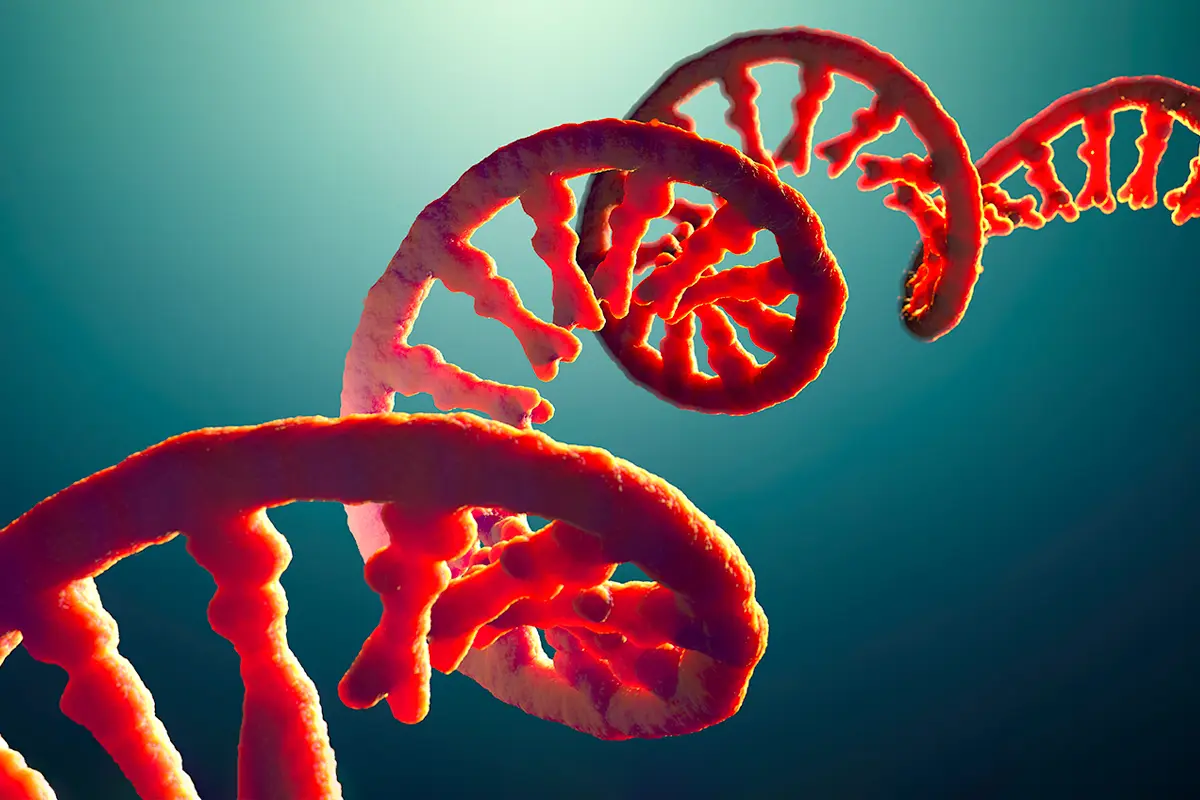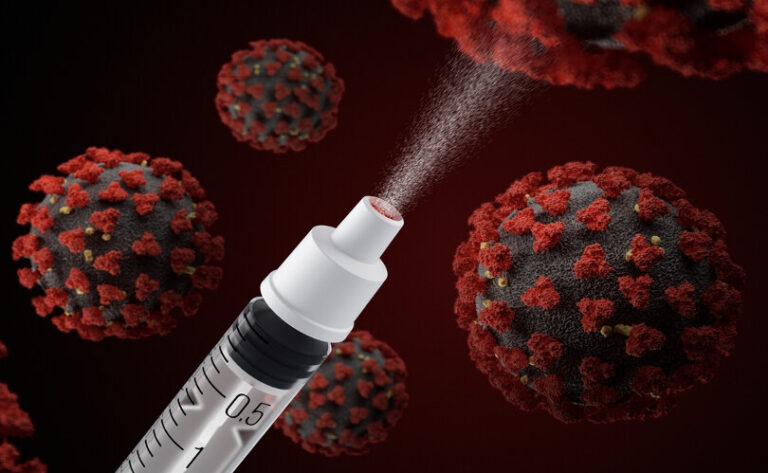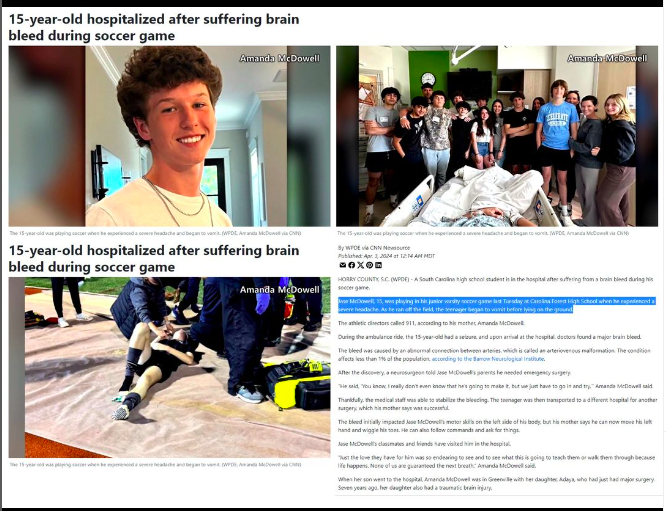Self-Amplifying RNA Shots Are Coming: The Untold Danger

The truth behind RNA-based vaccine technology (Part 3)
Perspectives on Health
Self-amplifying RNA (saRNA) will be used in the next generation of RNA-based injections. The phrase “self-amplifying RNA” should frighten you. It probably conjures up images of rogue scientific experiments.
As previously discussed, “mRNA vaccines” are created using modified RNA (modRNA) rather than messenger RNA. As modRNA hijacks our cells’ software, these so-called vaccines are actually gene therapy products (GTPs). We have no ability to influence modRNA (or saRNA) after it has been injected.
What Distinguishes saRNA From modRNA?
The term “self-amplifying” is self-explanatory: saRNA repeatedly replicates itself, which is not natural because natural mRNA is always (without exception) transcribed from DNA (this is referred to as the “central dogma of molecular biology”).
In comparison to modRNA, a small amount of saRNA produces more antigen; one shot of saRNA-based injection may be sufficient to generate sufficient antibodies against a virus.
Both saRNA and modRNA serve as the blueprint for a viral protein, which will be produced by our cell machinery (i.e., ribosomes) once it enters our cells.
The genetically modified modRNA sequence was created by replacing natural uridines with synthetic methyl-pseudouridines in order to generate the greatest amount of viral antigen. Pfizer-BioNTech and Moderna COVID-19 shots are based on this modification.
Unlike modRNA, saRNA contains uridines rather than methyl-pseudouridines. Why? Because saRNA self-replicates and synthetic methyl-pseudouridines are not available in our cells, saRNA must rely on naturally occurring uridines. Our cells will produce foreign proteins using their own cell machinery and natural resources, which is why these cells eventually die.
However, this creates a significant issue: mRNA is highly unstable and thus has a short lifespan—far too short for our immune system to produce enough antibodies. The second distinction between modRNA and saRNA is the solution to this problem.
Unlike modRNA, saRNA contains an additional sequence for the replicase, and saRNA that is destroyed (by RNases) must be replaced with new saRNA.
Because natural mRNA does not self-replicate, saRNA is unquestionably a genetically modified RNA (modRNA).
Simply put, saRNA is another type of modRNA.
Why the Change to saRNA?
The political solution is saRNA: the same amount (or even more) of antigen in a single shot! The public will most likely be told that due to the virus’s regular mutations, yearly adapted boosters will continue to be required.
Numerous preclinical and clinical studies have already been conducted using saRNA technology. A review published in the journal Pathogens in 2023 describes saRNA vaccines as “improved mRNA vaccines.” A summary of five years of saRNA study findings was published in the journal Vaccines. These new vaccines can be used once the necessary clinical studies are completed. This process is expected to be as quick as it was for the COVID-19 vaccines. The approval process will be simplified because it is possible to argue that the technique (modRNA in lipid nanoparticles) is already approved and that only the modRNA sequence differs. As a result, these new saRNA vaccines could be injected at any time into an unsuspecting public.
While BioNTech conducted saRNA experiments (BNT162c2) before shifting its focus to modRNA (BNT162b2), Arcturus Therapeutics was the first to announce (in 2022) that its COVID-19 saRNA vaccine candidate ARCT-154—now the most advanced saRNA vaccine in trials—met the primary efficacy endpoint in a phase-3 study.
Participants in the Arcturus Therapeutics study were given two doses of 5 micrograms of saRNA each. Pfizer-BioNTech (30 micrograms/shot) and Moderna (100 micrograms/shot) used much higher modRNA concentrations.
saRNA Injections Will Not Solve the Problems With modRNA Injections
The spike protein, as we discovered with modRNA, is toxic to our bodies. We know that modRNA causes more spike protein to be produced than would be available during a natural infection, and we also know that repeated boosters cause immune tolerance.
When compared to modRNA, a small amount of saRNA results in an increase in the amount of antigen produced.
The “dose” of viral antigen produced by current and future RNA-based vaccines will vary greatly from person to person, depending on the cell type producing the desired antigen, genetic predisposition, medical history, and other factors. This alone should make the use of RNA-based injections as vaccines for healthy people illegal.
Another Dubious Step Forward: From Linear to Circular saRNA
Because RNA-degrading enzymes (RNases) are known to act from both ends of linear RNA, scientists created circular RNA to prevent these enzymes from doing their natural job of degrading no longer needed mRNAs. This resulted in increased stability and translation efficiency, followed by increased production of the desired antigen.
But is this truly a step forward? Consider the negative impact of prolonged antigen presentation. Because of the increased antigen levels, a single injection of saRNA—whether linear or circular—may result in adverse events comparable to repeated (booster) injections of modRNA.
Long-Term Presentation of an Antigen Is Known to Cause Immune Tolerance
Following vaccination, our bodies produce antibodies, primarily immunoglobulin G (IgG), including IgG1 and IgG4.
Beginning with the third COVID-19 injection (the first booster), vaccinated individuals exhibit an antibody class switch. This ranges from inflammatory IgG1 antibodies (which attack the spike protein) to non-inflammatory IgG4 antibodies (which tolerate it). In the long run, elevated levels of IgG4 antibodies will exhaust the immune system, resulting in immune tolerance. This could explain the “breakthrough” infections caused by COVID-19, as well as the reduced immune response to other viral and bacterial infections and the reactivation of latent viral infections. It may also cause autoimmune diseases and uncontrolled cancer growth.
Notably, long-term IgG4 responses have been associated with RNA-based injections, whereas individuals with a COVID-19 infection prior to vaccination had no increased IgG4 levels, even when they received a shot after the infection.
This observation clearly refutes the World Health Organization’s policy of vaccinating people before they come into contact with novel viruses, assuming people have no immunity against them (completely ignoring the reality of cross-immunity).
RNA-Based Injections Are Recognized as Gene Therapy Products
Inexplicably, RNA-based injections used to protect against infectious diseases were dubbed “vaccines,” allowing them to be exempt from the stringent regulations that apply to gene therapy products (GTPs). Again, this occurred without any scientific justification being provided to the public.
Guerriaud and Kohli and Helene Banoun provide excellent and comprehensive reviews of the regulatory issues surrounding RNA-based vaccines.
Uur ahin, who was already the CEO of BioNTech at the time, co-wrote an article in Nature in 2014 about developing a new class of drugs called “mRNA-based therapeutics.” According to the authors, “One would expect the classification of an mRNA drug to be a biologic, gene therapy or somatic cell therapy.”
In 2021, the author of a letter published in Genes & Immunity called Moderna and Pfizer-BioNTech’s RNA-based vaccines “a breakthrough in the field of gene therapy” and “a great opportunity for the FDA and EMA to revise the drug development pipeline to make it more flexible and less time-consuming.”
Two disturbing facts have recently come to light:
The contaminating DNA is the result of a change in the manufacturing process made by Pfizer-BioNTech after the completion of the BNT162b2 (Comirnaty) Clinical Trial C4591001. Pfizer-BioNTech modRNA was initially produced in-vitro from synthetic DNA and amplified using PCR (polymerase chain reaction) (Process 1). To scale up manufacturing, modRNA-encoding DNA was cloned into bacterial plasmids (Process 2). Put simply, the clinical trial was run on process-1 lots, but the world’s populations received process-2 lots.
This means that people who agreed to be vaccinated were injected with a substance other than the one approved by regulatory agencies and to which they had agreed.
The plasmid-DNA in the Pfizer-BioNTech and Moderna COVID-19 shots contain a 72-base pair sequence of the Simian Virus-40 (SV40) promoter, which is well-known to enhance plasmid DNA transport into the nucleus.
The presence of DNA in the RNA-based COVID-19 injections is now unmistakable.
RNA-based technology is unjustifiable and unethical, especially when used as vaccines on healthy people. The technique is the problem, not the tragic number of adverse events or excess mortality rates, and the same problems will occur in all future RNA-based “vaccines.”
RNA-based “vaccine” technology contradicts the central concept of evolution over millions of years. While injected modRNA and saRNA continuously produce antigens, the short lifespan of natural messenger RNA (mRNA) is required for healthy and specific cell functions. (The short lifespan of mRNA allows our cells to adapt to changing conditions as quickly as possible while avoiding the production of unnecessary proteins.)
A premise of RNA-based “vaccine” technology is that all of our body cells must produce a foreign viral protein, which contradicts basic biological principles such as distinguishing between our own cells and foreign invaders, and will result in our immune system attacking our own cells.
Even in the absence of (the enzyme) reverse transcriptase, RNA can be reverse-transcribed into DNA (i.e., by LINE1 elements present in our genome/DNA). Contaminated DNA (in RNA-based vaccines) is the norm, not the exception. Because both RNA and DNA can be integrated into the human genome, RNA-based “vaccines” are actually gene therapy products.
It is in no way justifiable to subject RNA-based GTPs for medical use to strict controls while excluding RNA-based GTPs known as vaccines from these controls despite the fact that they are intended for the majority of the human population. Even in an emergency, no one, least of all politicians, should be forced to be injected with any substance.
What Did COVID-19 Teach Us About Science, Politics, and Society?
For many years, scientists have fantasized about manipulating human “software”—that is, DNA or RNA. Manipulation of DNA has always been considered unethical. In retrospect, COVID-19 may herald the dawn of RNA-based “vaccines” and the end of the ban on tampering with human DNA.
The authors wrote in a 2023 commentary in the Journal of Evaluation in Clinical Practice that it was clear from the beginning of the pandemic that some influential scientists and their political allies demonized dissenting scientific views and evidence offering a second opinion. Despite conflicting evidence, national politicians “assured the public that they were adopting COVID-19 policies by ‘following the science.'” However, scientific agreement was only obtained by suppressing scientific debate.
Remember that when questions are permitted, it is science; when they are not permitted, it is propaganda.
Politicians’ chosen “experts” told us that we needed to be vaccinated in order to fight a new respiratory virus. This contradicts human immune system science. Our immune systems are dynamic, and they can clear a virus they have never seen before, as well as develop cross-immunity to identify variants even if the virus mutates. However, because RNA-based vaccines produce a single antigen, our immune system is prevented from developing cross-immunity against virus variants. This is especially true for respiratory viruses with a high mutation rate. This, in turn, will increase the frequency and severity of infectious diseases in the long run. Thus, politicians who want to protect the population from future infections should offer health programs that strengthen the immune system before seasonal infections.
Scientists have no idea how to direct modRNA or saRNA to a specific cell type or how to stop administered RNA translation. They are still researching how to improve the stability of injected RNA and the amount of antigen produced. The current advancement of RNA-based vaccine technology is reminiscent of the poem “The Sorcerer’s Apprentice,” written over 200 years ago by German poet Johann Wolfgang von Goethe:
“The spirits, whom I’ve careless raised, are spellbound to my power not.”





